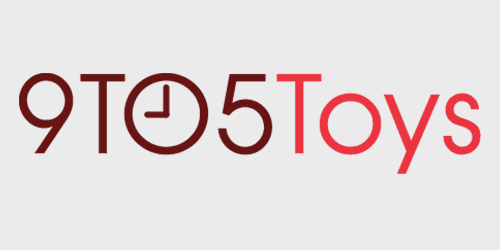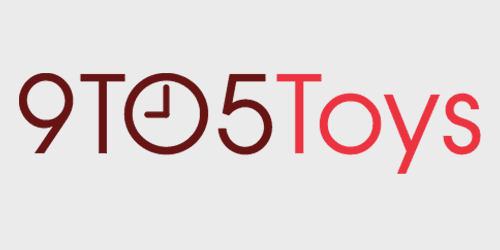 Buy Now
Buy NowBack in March, Philips unveiled its latest 40-inch 4K display with a curved design and a bevy of inputs. Well, except for USB-C. Since then I’ve been tinkering with it as a second monitor for my 27-inch 5K iMac and 13-inch MacBook Pro.
I just had to try out this massive display that is bigger than the first flatscreen TV I ever owned by about 25%. My experience with Philips’ 40-inch display has left me with more than a few opinions on the viability of this monster. Head below for more.
Out-of-the-Box |
It’s big. This is definitely the largest display that I’ve used and the sheer size of it is rather intimidating at first glance. In fact, it’s almost unruly to attempt unpacking it by yourself. Once it’s removed from the box, setup becomes much easier.
Philips killed the assembly process. The aluminum base has a dedicated screw that connects directly to the monitor. It’s one attachment and you’re ready to plug-in to your MacBook or PC and get started.
Given that I was used to matching 27-inch 5K displays, I knew that making the jump to 40-inches at 4K was going to take some getting used to. Once I maneuvered it onto my desk, I realized just how big of a change this would be.

I/O |
But first, it was time to hook up my iMac. Philips delivers on the connectivity side of things as you’d hope for a monitor of this size. That is, as long as you’re cool with skipping out on USB-C. Yes, I know it’s the wave of the future but anyone with legacy technology still appreciates USB-A. While we’re headed that way, non-early adopters are still fully entrenched in the older connectivity.
Here’s the breakdown of ports:
-
VGA (Analog )
-
DisplayPort x 2
-
HDMI (1.4) – MHL x 1
-
HDMI (2.0) – MHL x 1
- USB 3.0 x 4 – 1 w/ fast charging
- 3.5mm Audio-in
- Headphone out

That’ll work. I love having the extra USB ports, especially one that can charge my mouse or keyboard. You are going to run into the same problem that plagues all iMac users: the ports are on the back. That hinderance doesn’t stop my appreciation for all the extra I/O. I’m using DisplayPort for my setup but HDMI works well for MacBooks and gaming consoles alike.
Philips includes a handful of intriguing features like split-screen view that can throw up four sources at once, if needed. This is kind of cool if you’re into gaming (yay 60Hz!) but otherwise might prove itself to be overkill.

Immersive Experience |
I’ve watched a variety of content on curved HDTVs before and my overall reaction was pretty meh. But I’ve learned that I was probably sitting too far away. Having a curved display just a few feet away really gives you a feel for what it can offer. There’s a placebo effect going on here, likely, but I enjoyed the physical difference in having a curved display versus my iMac’s flat panel.
There was little issue overall when it came to seeing the edges of my workspace. Make no mistake about it, there is some travel here for your eyes, but overall it’s hardly straining to see from one corner to another. When used as a standalone display separate from my iMac, it becomes even less of an issue.

4K at 40-inch Problems |
I’ve been spoiled with 27-inch 5K displays for a some time now. Going to 40-inches has its advantages, but only at 4K can you start to see the limitations of the resolution. This holds especially true when Philips’ latest release is put up against the gorgeous 5K iMac display.
Text is somewhat grainy and I wouldn’t recommend editing on the 40-inch if you have other (read: Apple-approved) displays on-hand. As well, I always seem to struggle to match up the color settings with Apple’s always on-point panels. Ultimately, these complaints are going to be on a user-by-user basis, so you may not experience this personally. Everyone’s preferences are different and monitors are arguably in the same category as headphones in this regard.

Verdict |
The Philips 40-inch 4K Monitor is a beast. It has connectivity, size, and a sleek design. I love the aluminum base that plays nicely with my iMac. But it doesn’t come cheap. Most retailers are currently offering this display for around $1,000. The reality is that it’s going to be too costly for most users. My hunch is that the few interested in dropping this kind of cash will want USB-C connectivity included, which you won’t find here.
I’ve loved my experience with the Philips monitor overall. Quality, craftsmanship and design are all there. It’s that stinking $1,000 price tag.
Now, I save a little nugget for the end here. The dirty little secret is that AOC launched a 40-inch 4K display recently too that is very similar to the Philips unit that I reviewed here. The good news? It’s going for nearly 50% off these days. Curious enough, I also had one of these to play around with for a few weeks. Overall, the quality is largely the same minus a few physical changes from aluminum to plastic. If you’re hesitant on dropping $1,000, you might want to check out this display for AOC as an alternative.
FTC: We use income earning auto affiliate links. More.





Comments